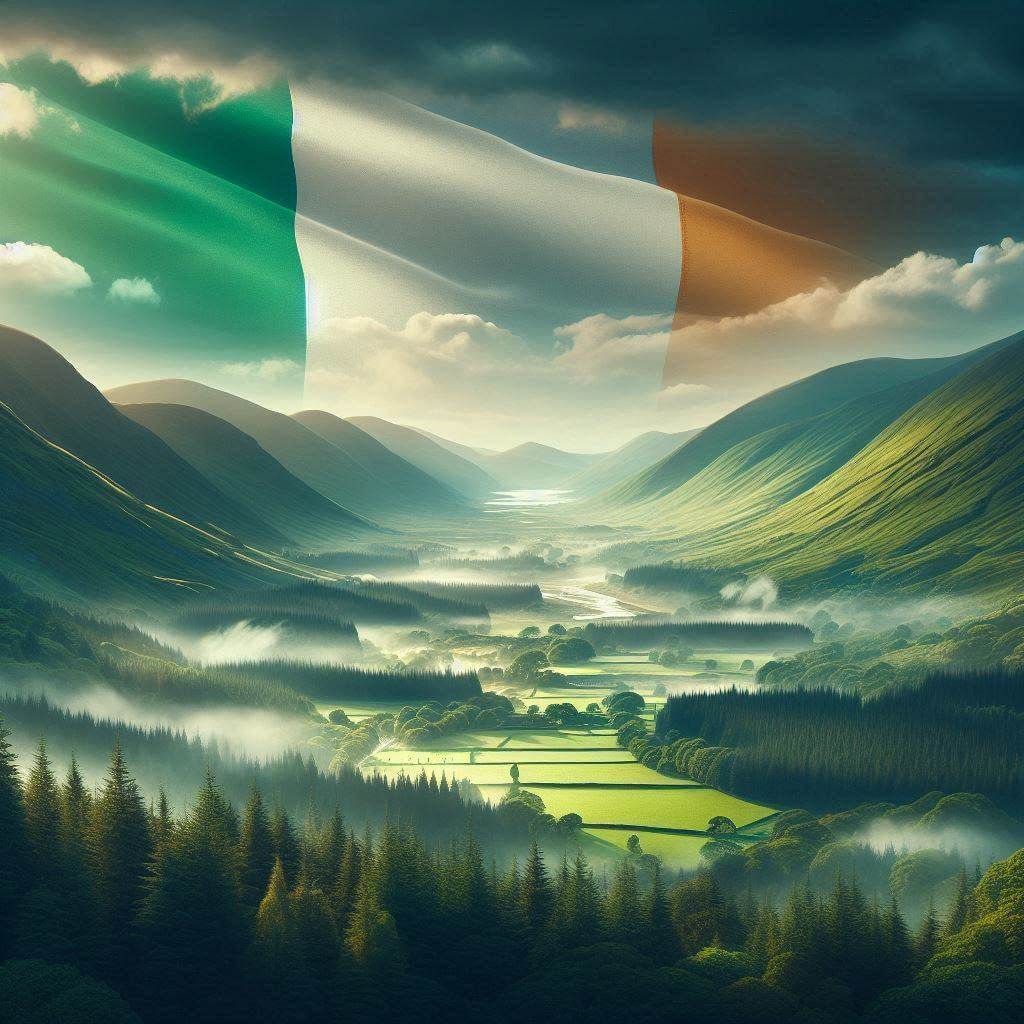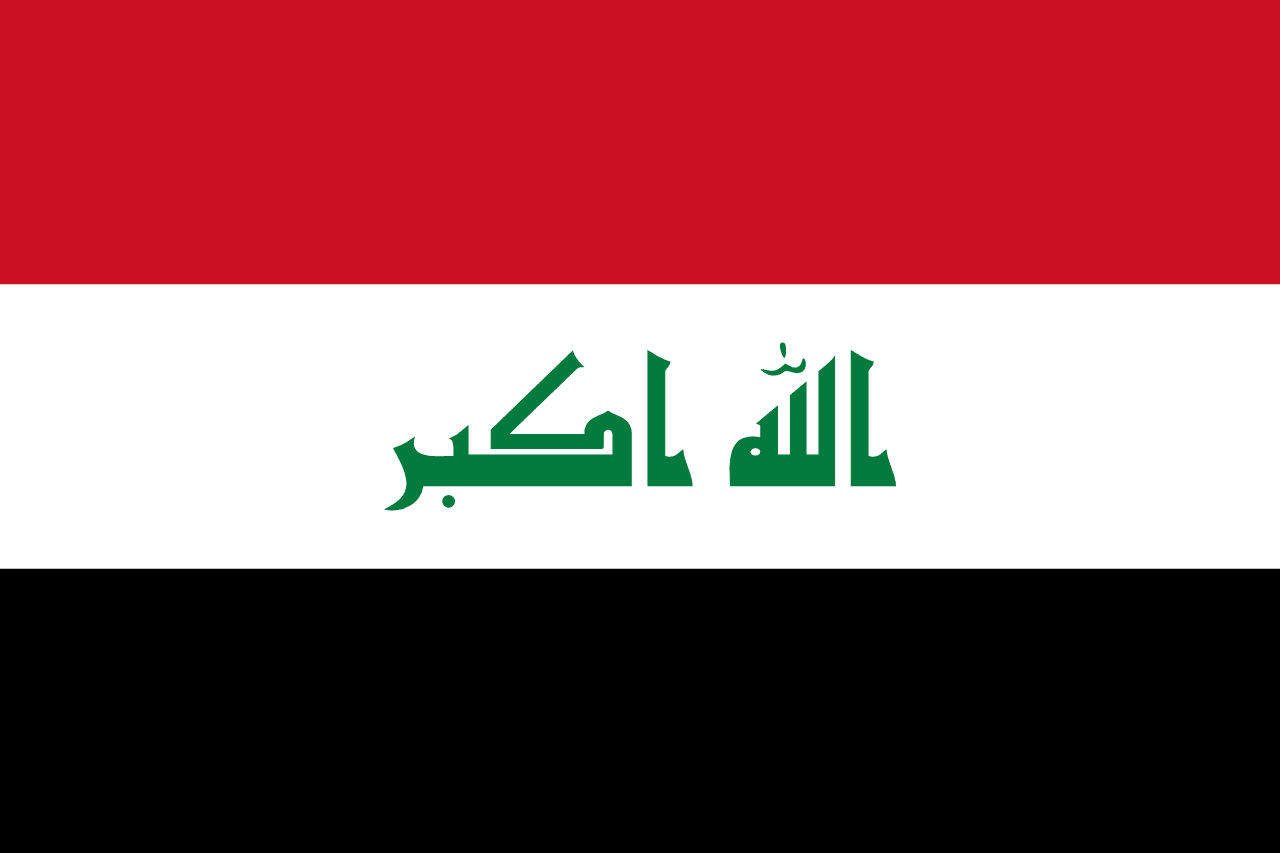The flag of Ireland, also known as the Irish tricolor, consists of three vertical stripes of green, white, and orange. This simple yet powerful design encapsulates Ireland's rich history, cultural diversity, and aspirations for peace and unity.
Ireland information
| National Flag Day | — |
| Sovereign state | Yes |
| Official name | Ireland (Éire) |
| Capital | Dublin |
| Population | 4,921,590 |
| Area | 70,273 km² |
| Currency | Euro (EUR) |
| Language | Irish, English |
| Continent | Europe |
| Region | Northern Europe |
| Subregion | — |
| Borders | United Kingdom (Northern Ireland) |
| Timezone | Greenwich Mean Time (GMT) UTC+0 |
| Calling code | +353 |
| Top-level domain | .ie |
History of the Irish Flag
 The Irish tricolor was first introduced by Thomas Francis Meagher in 1848, during the Young Irelander Rebellion. However, it was not officially adopted as the national flag until January 21, 1919, when it was raised at the first Dáil Éireann (Irish Parliament) meeting during the Irish War of Independence. The flag's design was inspired by the French tricolor, reflecting the ideals of liberty, equality, and fraternity that influenced Irish republicanism.
The Irish tricolor was first introduced by Thomas Francis Meagher in 1848, during the Young Irelander Rebellion. However, it was not officially adopted as the national flag until January 21, 1919, when it was raised at the first Dáil Éireann (Irish Parliament) meeting during the Irish War of Independence. The flag's design was inspired by the French tricolor, reflecting the ideals of liberty, equality, and fraternity that influenced Irish republicanism.
Symbolism and Design of the Irish Flag
Each color of the Irish flag carries profound symbolism. The green stripe represents the Gaelic tradition and the Catholic majority, symbolizing Ireland's ancient heritage and the nationalist movement. The orange stripe represents the Protestant minority, particularly those descended from supporters of William of Orange. The white stripe in the center symbolizes peace and hope for unity between these two communities. This design reflects Ireland's complex history and its aspirations for reconciliation and harmony among all its people.
Usage and Significance of the Irish Flag
 The Irish flag holds immense importance as a symbol of national identity, unity, and independence. It is prominently displayed during official ceremonies, national holidays such as St. Patrick's Day, and at government buildings. The flag also plays a significant role in sports events, particularly in international competitions where it represents Irish athletes and teams. Its use extends beyond Ireland's borders, with Irish communities worldwide using it as a symbol of their heritage and cultural identity.
The Irish flag holds immense importance as a symbol of national identity, unity, and independence. It is prominently displayed during official ceremonies, national holidays such as St. Patrick's Day, and at government buildings. The flag also plays a significant role in sports events, particularly in international competitions where it represents Irish athletes and teams. Its use extends beyond Ireland's borders, with Irish communities worldwide using it as a symbol of their heritage and cultural identity.
Interesting Facts About the Irish Flag
- The Irish Constitution does not specify the exact colors of the flag, leading to variations in shade, particularly of the orange stripe.
- During the Easter Rising of 1916, a significant event in Ireland's struggle for independence, the tricolor was flown alongside the green flag with the harp, which was then more commonly associated with Irish nationalism.
- The Irish flag influenced the design of the flag of Côte d'Ivoire, which uses the same colors in reverse order.
- In Northern Ireland, the use of the Irish tricolor can be controversial due to its association with Irish republicanism, highlighting the ongoing complexities of identity and politics in the region.
- The flag is often referred to as "bratach na hÉireann" in the Irish language, which simply means "the flag of Ireland."





